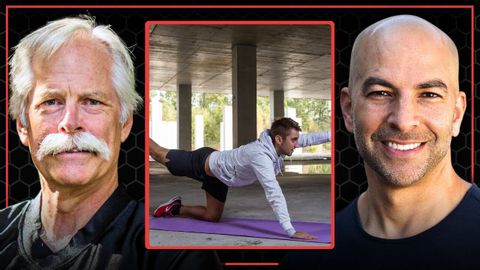減輕下背部疼痛和防止受傷的最佳運動|彼得-阿蒂亞和斯圖爾特-麥吉爾 (The best exercises for reducing lower back pain & preventing injury | Peter Attia and Stuart McGill)
yacki99 發佈於 2024 年 10 月 08 日  沒有此條件下的單字
沒有此條件下的單字US /ˈtrɪɡɚ/
・
UK /'trɪɡə(r)/
- n.板機;觸發器;起動裝置;觸發事件;觸發物 (心理學);觸發器 (電子學);觸發器 (計算機);釋放器 (釣魚)
- v.t.觸發;觸發;引發反射動作
- v.t.打;擊;攻擊;刪除
- n. (c./u.)打擊;攻擊;(棒球) 好球;罷工;全倒;攻擊
- v.i.致富;突然想出,猛然想起
US /kəˈrɪr/
・
UK /kə'rɪə(r)/
- n. (c./u.)事業;生涯;生涯;公共生活
- v.t./i.事業;發展
- v.t.促進;職業
- adj.長期的
US /daiˈnæmik/
・
UK /daɪˈnæmɪk/
